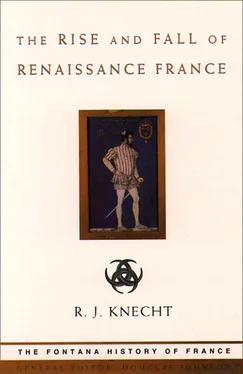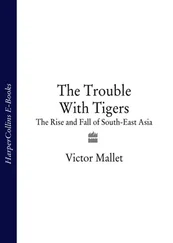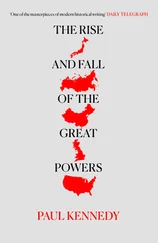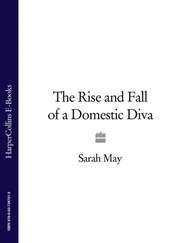Although many towns were exempt from the taille , they were often asked for forced loans, which could be even more burdensome. In 1515 and 1516, for example, Francis asked for sums ranging from 1500 to 6000 livres each from Toulouse, Lyon, Troyes and Angers. Paris was asked for 20,000l. to help pay for the defence of the kingdom. Sometimes a town was allowed to recoup by levying a local tax or octroi on some commodity such as wine. An expedient much used by Francis was the alienation of crown lands by gift or sale. This was repeatedly opposed by the parlement, which pointed to the adverse effect on the king’s ‘poor subjects’ of any diminution of his ‘ordinary’ revenue, but Francis always managed to get his way.
Two other expedients were the sale of titles of nobility and of royal offices. As far as is known, Francis issued 183 letters of ennoblement during his reign of which 153 were sold. They cost between 100 and 300 écus before 1543 and considerably more afterwards. As for offices, Francis turned their sale into a veritable system. They were sold directly to bourgeois anxious to acquire them as a means of social advancement (for many offices conferred noble status on the holders) or were given away as rewards for services rendered or as repayment of loans, leaving the recipients free to sell them if they wished. Francis also sold résignations and survivances which enabled office-holders to nominate their successors. The price of a councillorship in the Parlement of Paris was fixed by 1522 at 3000 écus; other offices commanded variable amounts. The sale or venality of offices created a dangerous situation in the long term as they tended to be monopolized by a limited number of families.
The trésoriers de France and généraux des finances (known collectively as gens des finances ), who administered the crown’s finances between 1515 and 1527, were closely related to each other and shared their interests. Alongside their royal duties they ran very profitable businesses of their own. Consequently, their public and private functions overlapped, offering speculative temptations. An outstanding member of this financial oligarchy was Jacques de Beaune, baron of Semblançay, the son of a rich merchant of Tours, who became the king’s chief financial adviser after serving his mother and, before her, Anne of Brittany. As général of Languedoïl, he played a leading role in funding the Marignano campaign. In January 1518 he was given overall powers of supervision over all the king’s revenues, but it was probably as an agent of credit that he proved most useful to the crown. Important as they were, the gens des finances did not have ultimate control of the crown’s financial policy. This was vested in the king’s council among whose members one, usually the Grand Master, was singled out to oversee financial business. The king himself was by no means uninterested in such business. In April 1519 he spent three days with his gens des finances looking for ways to fund the army.
War with the emperor (1521)
Charles of Habsburg was crowned King of the Romans at Aachen on 23 October 1520. Two days later Pope Leo X allowed him to use the title of ‘Roman emperor elect’. Charles hoped to go to Italy soon for his imperial coronation, but various matters detained him in Germany, among them the Lutheran Reformation. Francis hoped to return to Italy himself, but was prevented by a serious accident. However, he added to Charles’s problems in order to keep him out of Italy. Among visitors to the king’s bedside were Robert de La Marck, seigneur de Sedan, and Henri d’Albret, king of Navarre. Soon afterwards they invaded Luxemburg and Navarre respectively. Francis disclaimed any responsibility for their actions, but Charles was not deceived. He accused the king of waging war covertly and warned him of the risks involved. Soon afterwards an imperial army led by the count of Nassau threw La Marck out of Luxemburg, overran Sedan and threatened France’s northern border. In the south, Marshal Lescun’s army was routed at Ezquiros, and Spanish Navarre, which he had invaded, reverted to Castilian rule.
In Italy, too, Francis ran into serious trouble. On 29 May, Leo X came to terms with Charles V. The latter promised to restore Parma and Piacenza to the Holy See, to assist the pope against the duke of Ferrara and to take the Medici under his protection, while Leo promised to crown Charles emperor in Rome and signified his willingness to invest him with Naples. The treaty, however, was kept secret until Leo was given a pretext to break his alliance with France. In June, Lescun, who had been left in charge of Milan, invaded the States of the Church in pursuit of some rebels. His action gave the pope the pretext he had been waiting for. When an ammunition dump in Milan exploded, killing many French soldiers, Leo acclaimed the event as an act of God and made public his treaty with Charles. Soon afterwards they formed a league for the defence of Italy. Denouncing the pope’s ingratitude on 13 July, Francis banned the export of all ecclesiastical revenues to Rome and imposed heavy fines on Florentine merchants in France. He boasted that before long he would enter Rome and impose laws on the pope.
By the summer of 1521, Francis had cause to rethink his policies. The emperor was threatening his northern border, Navarre was again under Castilian rule, the pope had turned imperialist and the French hold on Milan was precarious. On 9 June the king accepted an offer of mediation from Henry VIII, and in July an international conference met at Calais under Wolsey’s chairmanship. Francis wanted peace, not a truce, but Mercurino di Gattinara, the imperial chancellor, wanted neither. He was anxious to prove that Francis had been the aggressor as the first step towards forming an Anglo-imperial alliance.
On 20 August the emperor invaded northern France. For three weeks Mézières was heavily bombarded, but the garrison, commanded by Bayard, put up a stout resistance. This gave Francis time to gather an army near Reims. He still hoped for peace, but the Calais conference was getting nowhere. Wolsey, who had paid a mysterious visit to the emperor in Bruges, seemed to be playing for time. In late September the title of war suddenly turned in France’s favour. On 26 September, Nassau lifted the siege of Mézières and retreated into Hainault; in Italy, Lautrec relieved Parma; and on 19 October, Bonnivet captured Fuenterrabía on the Franco-Spanish border. These French victories naturally affected the talks in Calais. When Wolsey suggested a truce, Francis was no longer interested. He planned to relieve Tournai which was being besieged by the imperialists, but on 23 October he missed a unique opportunity of defeating the enemy, and on 1 November he began retreating towards Arras. Nine days later he disbanded his army; soon afterwards Tournai capitulated. Francis was hoping for better news from Italy, but on 19 November the league’s army captured Milan. The French were then driven out of other towns in the duchy. The Calais conference, meanwhile, came to an end. On 24 November, in the Treaty of Bruges, Wolsey committed England to enter the war on the emperor’s side in 1522.
The financial crisis of 1521–3
It was only in 1521, after Francis had gone to war with the emperor, that the gap between his income and expenses became almost unbridgeable. For war had become very expensive, especially the hire of Swiss mercenaries. ‘These people’, wrote Anne de Montmorency, ‘ask for so much money and are so unreasonable that it is almost impossible to satisfy them.’ Yet Francis could not dispense with them. Within a few months his indebtedness to moneylenders rose alarmingly. By the spring of 1522 he owed them one million livres. At the beginning of 1521, Semblançay had in his keeping 300,000 écus which the king had received from Charles V as part of the Neapolitan pension and 107,000 livres belonging to Louise of Savoy. When she implored Semblançay to do everything in his power to assist her son, he assumed that she meant him to use her savings as well as the king’s. But this money was very soon swallowed up. On 13 September, Semblançay informed the king that he had only enough money left for one month. As the war dragged on through the winter, Francis created offices, and in February 1522 alienated crown lands worth 200,000 livres. The taille of 1523 was anticipated to the tune of 1,191,1841. The king called on a number of towns to pay for infantry. He also seized church treasures worth 240,000l. The silver grille enclosing the shrine of St Martin at Tours was torn down by royal agents, melted down and turned into coin. At Laon cathedral four statues of apostles in gold were given the same treatment.
Читать дальше












